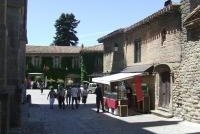
Of all the walled cities on the WHS list, this is my least favourite. The place seemed to have been turned into one huge outdoor restaurant. It was impossible to move through the streets without falling over someone's dining table. At least the traffic (apart from motor scooters and delivery vans) was kept out. Not a visitor-friendly place.
Keep reading 0 comments
To reach Schokland by bus involves walking from the nearest bus stop in the village of Ens. Buses arrive in Ens from Zwolle via Kampen, a picturesque riverside town with a railway station. Buses continue from Ens to Emmeloord (the new one) where I changed for Lemmer and the DF Woudegemaal.
Keep reading 0 comments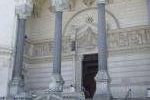
As in Strasbourg, in Lyon I bought a day ticket which covered buses, trams, funicular, trolleybus and metro all for 4.50 euros. This way I managed to visit in one day the ornate Hotel de Ville, the sites on Fourviere Hill, the cathedral, several churches, the Temple and other architectural monuments and the huge Place Bellecour. Also interesting was the Embroidery Museum on the Presq'ile.
Keep reading 0 comments
As things are a bit spread out in Strasbourg I found a day ticket for the buses and trams invaluable at 3.60 euros. It enabled me to visit the Court of Human Rights, the European Parliament and the Council of Europe buildings in addition to Vauban's barrage and Petite France as well as the cathedal, churches and palaces on the Grand Ile.
Keep reading 0 comments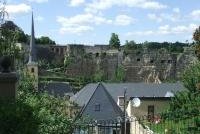
This has to be one of the most congested cities in Europe, and finding parking is a nightmare. On my first visit the only parking we could find was at the Hamm military cemetery several km from the centre.
So last year I went by train and found the Wenzel Circular Walk which made seeing the city on foot so much easier. Another advantage of travelling by train was the cheaper hotels were across from the station in rue Strasbourg.
I used Luxembourg as a base for visiting Trier, Volklingen, Nancy and Longwy.
Keep reading 0 comments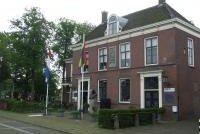
I admired the distictive architecture of the remaining houses in Middenbeemster, which I reached by bus #100 from Amterdam Centraal station.
Keep reading 0 comments
From Seoul there are now fast KTX trains to Dongdaegu, and transferring from that station to the Seobu bus station can be easily effected by taking the metro to Seondangmot.
On the bus ride to Gayasan National Park I met up with a number of fellow travellers, both foreign and local. None of these prepared me for the climb up to the site. But the effort was worth it to say the least. To see such an important facet of Korean history up close was indeed a privilege.
Keep reading 0 comments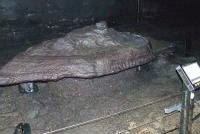
A memorable part of visiting Jeju was meeting so many friendly visitors, mostly local, on ther ferry from Mokpo to Cgheju-do. But I did visit some of Jeju's volcanic attractions.
one day I took a bus from Jeju-do up to Seongpapak on the side of Mount Hallasan and from there gained some views of the summit, as well as visiting the WHS museum there.
on another day I took a different bus heading to Seongsan Ilchubong and got off near the Manjanggul lava tubes and went for a 2km hike down through a tube, a black tunnel big enough to run a train through. Along the way were some beautifully illuminated lava formations. The 1 km open for visits is only a fraction of what is there.
Returning to the bus stop I caught another bus to Seongsan Ilchubong, clearly a place of pilgimage for the hundreds of people gathered there to climb to the summit.
Keep reading 0 comments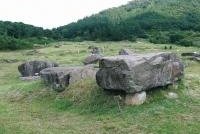
I have now visited all three WHS listed dolmen sites in Korea and consider the Gochang site to be the most interesting. There I saw a whole mountainside dotted with 128 dolmen of several different styles. Altogether there are around 2000 dolmen on this district. The visitor centre at the dolmen site is served by a bus from Gochang town, which in turn has bus connections with Jongeup and Janseong, both stations on the Mokpo railway line.
The Hwasun dolmen I reached from Neungju railway station, and the Ganghwa site by bus from the Sincheon bus station in Seoul.
Keep reading 0 comments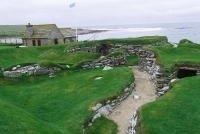
Orkney Coaches run a fantastic service linking the four parts of the WHS with Stomness and Kirkwall. A day ticket cost 7 pounds, and I felt right at home on the bus (the driver was from Tasmania). I found the ancient dwellings at Skara Brae very intesting, but Maes Howe seemed a smaller version of the mound at Newgrange, Ireland.
Connecting from the Scottish rail system to Kirkwall was made very simple with a return ticket costing 28 pounds, which covered the journey fron Thurso to Kirkwall via John O'Groats and Burwick and back again to Wick, in itself an interesting journey.
Keep reading 0 comments
My visit to Hwaseong happened to coincide with the Hwaseong Festival in October. As a result I was rewarded with seeing the spectacular buildings of the Haenggung adorned with people dressed in traditional costumes and performing traditional rituals.
To avoid a longish walk I took either buses 11, 13, 36 or 39 from the station to and from the fortress. Besides the metro, there are faster mainline trains from Seoul to Suwon.
Keep reading 0 comments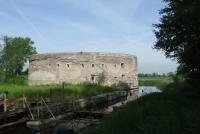
Although a number of the forts were closed I did manage to visit a few of them:
Aalsmeer fort - got a guided tour from the curator of the museum here, saw the facilities provided for the troops stationed here virtually undergound and enclosed in a massive reinforced concrete structure (train to Schiphol Airport then bus #198 to Aalsmeerdenbrug).
Fort Uitermeer - a circular fort (train to Weesp then bus #106 to Rondelvrugt.
Vesting Weesp - a circular fort (train to Weesp)
Muiden Slot - has more an appearance of a stately home or castle than a defence installation (by bus from Weesp).
Pampus Island - the ferry ride from Muiden included an extensive guided tour of the fort.
Amstelhoek fort - by bus #142 from Amsterdam Centraal to Tienboerenweg, Uithoorn.
Fort an der Drecht - now a restaurant, winery and art studio (bus #170 from Uithoorn).
Fort Vijfhuizen - now an art centre (by bus #140 from Uithoorn to Hoofddorp then bus #300).
Fort Veldhuis and Fort an der Ham - found these on a hike along the dykes from Heemskerk (bus #167 from Beverwijk station) to Krommenie-Assendelft station.
Keep reading 0 comments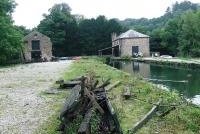
The Derbyshire Wayfarer ticket is a usful way of visiting this WHS. It covers all the buses and trains between Derby and Matlock.
Besides the mills themselves I was interested to see the Cromford wharf, where goods were loaded onto barges and distributed around the country by canal.
Keep reading 0 comments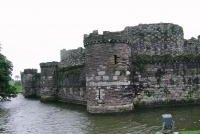
Basing myself in Bangor, itself a pleasant enough town, I was able to visit each of the royal castles:
Conwy - by train or bus from Bangor
Harlech - by bus from Bangor or train from Shrewsbury,then a steep climb up to the castle
Caernarfon - by bus or train from Harlech to Porthmadog then by bus to Caernarfon
Beaumaris - by bus from Bangor
Harlech castle was spectacular for its location and great views.
Keep reading 0 comments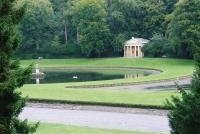
To get to Fountains Abbey I took a #36 bus from Harrogate to Ripon from where there was a #139 minibus that took me to the visitor centre inside the park. From there it was a short distance to the ruins of Fountains Abbey, which are quite extensive and take some time to explore.
From the abbey I contined through the Studley Royal water garden, past temples, lakes and follies to the deer park. Later I returned to the visitor centre by way of St Mary's church to catch the minibus back to Ripon.
Keep reading 0 comments
Another interesting site to visit if you are in the Stonehenge area : the Bulford Kiwi (not the pub). On a hill overlooking Bulford is a giant carving in chalk of a kiwi. It was carved in 1919 by New Zealand troops awaiting repatriation home. I understand it is cared for by a local boy scout troop.
Keep reading 0 comments
At the ironworks I was fascinated by the tiny cottages that had been restored in Stack Square and Engine Row. Nearby are the giant smelters where the ore was converted into metal and waste.
Keep reading 0 commentsjohn booth
Cornwall and West Devon Mining Landscape
Cornwall and West Devon Mining Landscape (Inscribed)
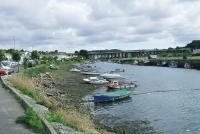
Over a few days I managed to visit a number of the sites:
Hayle - port for exporting tin
Wendron mining district - the Poldark mine with its interesting museum and exhibits
Portreath harbour - port for importing coal and exporting tin; many old mine workingws in this area
St Agnes - many derilict mine wotkings
Luxulyan - a mining village and Treffrey viaduct
Tamar valley - several derilict smelters seen from the train to Gunnislake
I visited all of the above by train or bus from Truro
Keep reading 0 comments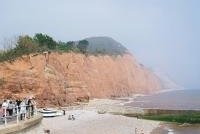
I also found extensive views of Chesil Beach from the causeway near Weymouth and from Littlesea.
The quarry area on Portland bill was very interesting too, with the cut stones ready to be lowered into barges, long since discontinued, for tranport and use in many London buildings.
Other interesting features along the cast were the cliffs at Bowleaze Cove, the red cliffs of Sidmouth and the Devon Cliffs at Exmouth.
Keep reading 0 comments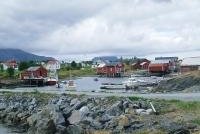
The highlight of my visit to Vega Island was to see the eider duck museum and nearby duck nesting site at Nes on the north coast of the island. I had been directed there by the young man at the tourist office in Gladstad. It was a longish walk but worth it.
I reached Vega Island by a small ferry from Bronnoysund. Many visitors reach Bronnoysund on the daily coastal ferries of Hurtigruten, but I chose to get there by bus from Grong railway station. I also used the bus service connecting the port of Roroy with Gladstad on Vega Island.
Keep reading 0 comments